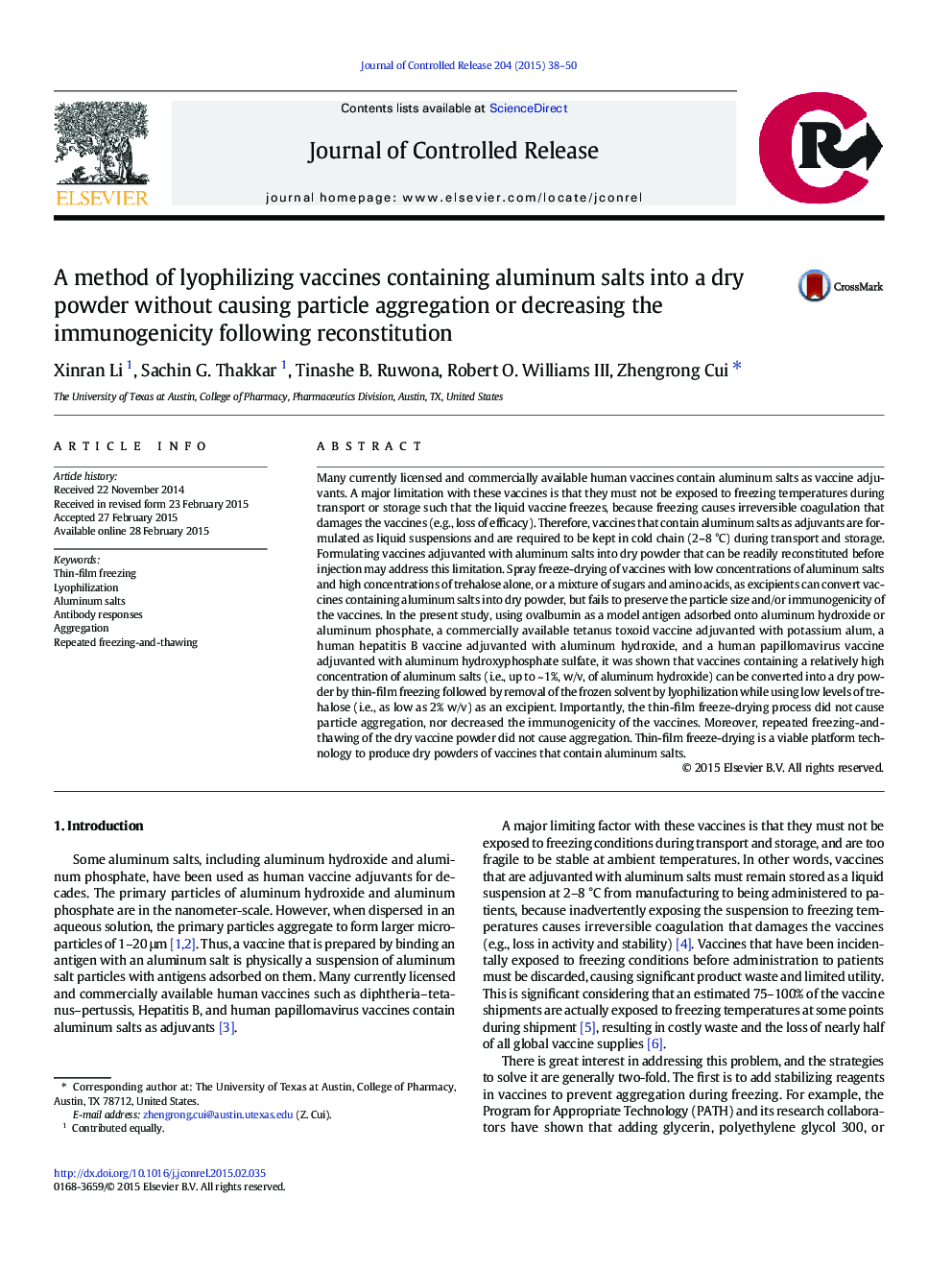| کد مقاله | کد نشریه | سال انتشار | مقاله انگلیسی | نسخه تمام متن |
|---|---|---|---|---|
| 1423786 | 1509045 | 2015 | 13 صفحه PDF | دانلود رایگان |
Many currently licensed and commercially available human vaccines contain aluminum salts as vaccine adjuvants. A major limitation with these vaccines is that they must not be exposed to freezing temperatures during transport or storage such that the liquid vaccine freezes, because freezing causes irreversible coagulation that damages the vaccines (e.g., loss of efficacy). Therefore, vaccines that contain aluminum salts as adjuvants are formulated as liquid suspensions and are required to be kept in cold chain (2–8 °C) during transport and storage. Formulating vaccines adjuvanted with aluminum salts into dry powder that can be readily reconstituted before injection may address this limitation. Spray freeze-drying of vaccines with low concentrations of aluminum salts and high concentrations of trehalose alone, or a mixture of sugars and amino acids, as excipients can convert vaccines containing aluminum salts into dry powder, but fails to preserve the particle size and/or immunogenicity of the vaccines. In the present study, using ovalbumin as a model antigen adsorbed onto aluminum hydroxide or aluminum phosphate, a commercially available tetanus toxoid vaccine adjuvanted with potassium alum, a human hepatitis B vaccine adjuvanted with aluminum hydroxide, and a human papillomavirus vaccine adjuvanted with aluminum hydroxyphosphate sulfate, it was shown that vaccines containing a relatively high concentration of aluminum salts (i.e., up to ~ 1%, w/v, of aluminum hydroxide) can be converted into a dry powder by thin-film freezing followed by removal of the frozen solvent by lyophilization while using low levels of trehalose (i.e., as low as 2% w/v) as an excipient. Importantly, the thin-film freeze-drying process did not cause particle aggregation, nor decreased the immunogenicity of the vaccines. Moreover, repeated freezing-and-thawing of the dry vaccine powder did not cause aggregation. Thin-film freeze-drying is a viable platform technology to produce dry powders of vaccines that contain aluminum salts.
Figure optionsDownload high-quality image (89 K)Download as PowerPoint slide
Journal: Journal of Controlled Release - Volume 204, 28 April 2015, Pages 38–50
